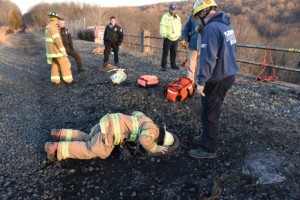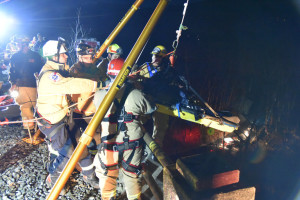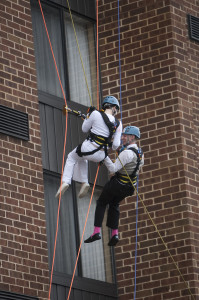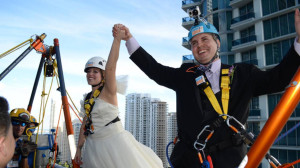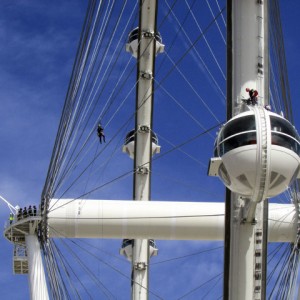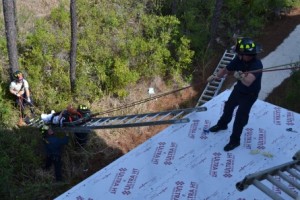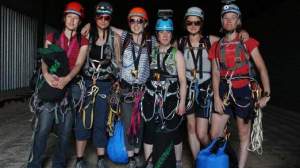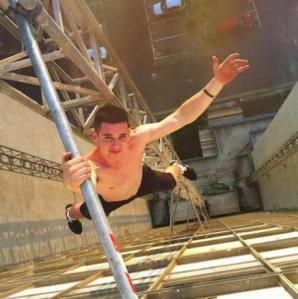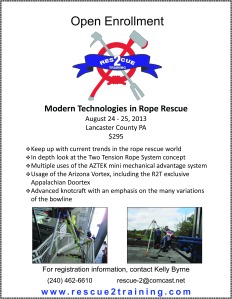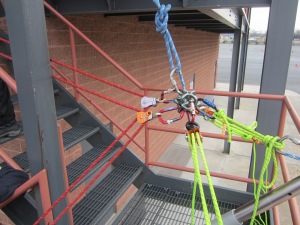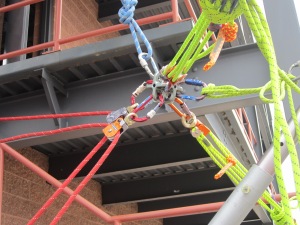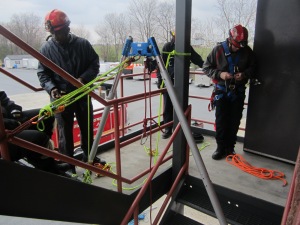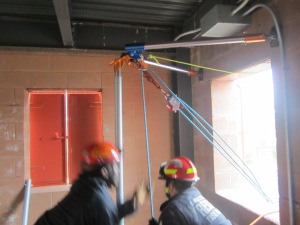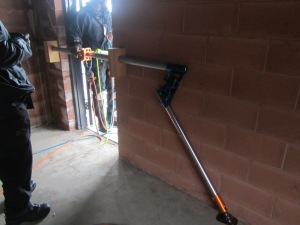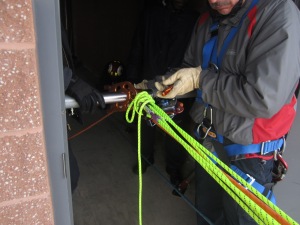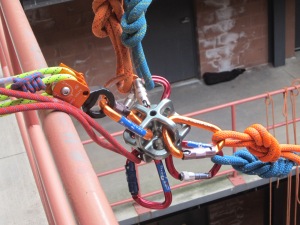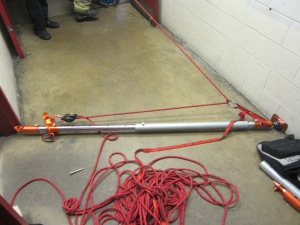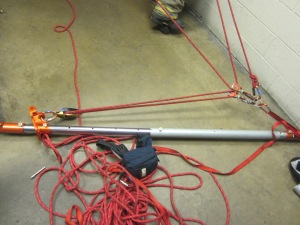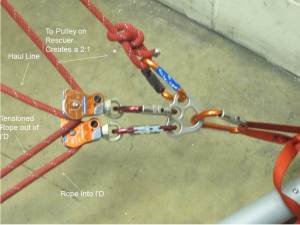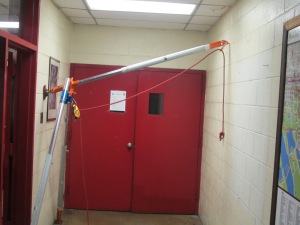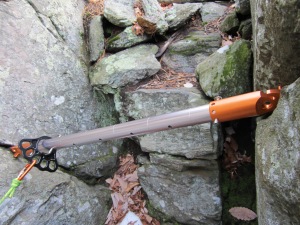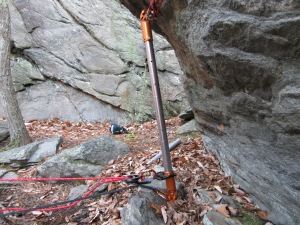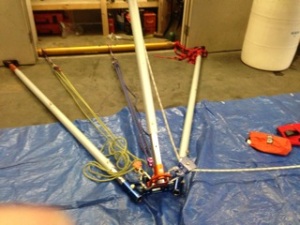There was a rescue from the Paulinskill Viaduct in New Jersey earlier this week. A young female injured her ankle while apparently climbing around under the viaduct, a popular place to do some urban exploring. The viaduct is listed a seeing 125′ above the creek below.
Reading the article linked below and looking at some of the pictures, a few things jumped out at me. The first was that just because you can access somebody on foot, in this case climbing down the manhole, doesn’t mean it’s the easiest way to remove them. It looks like the rescuers entered down the manhole on foot and came up the side of the viaduct as an attendant on the side of the stokes basket.
A couple of things I noticed: Great use of the tools at hand to construct a high directional. I do think, however, that it was leaned out a bit too far. If you watch the video in the link, you can see the difficulty in trying to bring the basket up and over the rail while the attendant is still attached. Not a huge difficulty, but probably frustrating.
Four quick thoughts on fixing that, from guy who wasn’t there and is Monday morning quarterbacking it. First, don’t have an attendant. There didn’t look to be many obstructions on the way up. Attendants are popular because it looks cool and we often times do it in training, but they are not needed as often as we put them on.
Second, have the attendant get on terra firma as soon as possible. This will cause the edge crew to only have to haul a single person load out of plumb and up over the rail. This means that the attendant needs to EASILY be able to move up and down the rope; either be great at ascending and descending quickly or use something like an AZTEK kit for the attendant’s line.
Third, don’t lean the bipod over so far. It’s nice to not have any rope touching the edge anywhere, but it makes it a tremendous pain in the butt to try and get back up over the edge because you are trying to pull a load a couple of feet in on a short rope. Difficult, to say the least.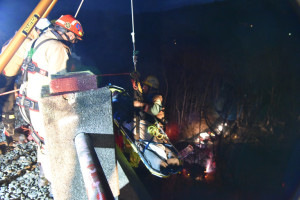
Fourth, make gravity work for you. I’m not sure if it was possible or not, but why not just lower all the way to the ground? Have the Gator at the train the bottom and move them up to the ambulance on that, perhaps? Again, I wasn’t there, but options like this one should always be considered during the size up.
http://www.lehighvalleylive.com/warren-county/index.ssf/2016/01/pair_cited_after_rescue_at_pau.html

